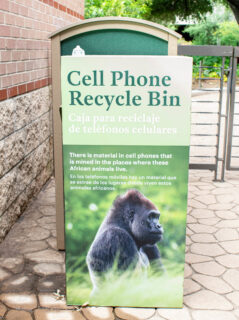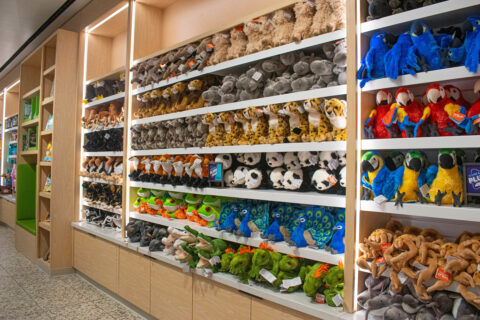Houston Zoo Leads the Charge Towards a Greener Future

This Earth Day, Houston Zoo shows its commitment to sustainability and conservation efforts with a series of groundbreaking initiatives aimed at reducing its environmental footprint. Houston Zoo’s brand-new headquarters building (HZHQ) has earned Leadership in Energy and Environmental Design (LEED) Gold certification, the second-highest level of achievement in the world’s leading green building rating system. The building has been designed to use 24% less energy than a standard office building through an efficient HVAC system, energy-saving LED lighting, and glass that reduces solar heat. Indoor water use and irrigation has also been significantly reduced, and 100% of the glass used is bird friendly, which improves its visibility to birds and helps avoid collisions. This recognition positions HZHQ as the first LEED-certified building at Houston Zoo, with additional projects underway.

In a significant step towards energy efficiency, Houston Zoo has embarked on a journey to become a 100% LED Zoo. The recent transition of the Reptile and Amphibian House to LEDs marks a milestone achievement, slashing energy used for lighting by a remarkable 70%. Similar transitions are planned for Wortham World of Primates and other Zoo areas. Not only does this initiative promise a brighter and more immersive experience for visitors and keepers, but it also eliminates the environmental hazards associated with fluorescent lights, which contain mercury. By embracing LEDs, Houston Zoo underscores its dedication to environmental stewardship.
Keeping animal welfare top priority, Houston Zoo is thrilled to have the opportunity to expand its cell phone and small electronics recycling program. Last month, the Zoo was one of the organizations partnering with Harris County to win a $4.86 million grant from the Department of Energy for electronic and battery recycling. Leveraging this opportunity, the Zoo aims to further grow its recycling program. The Zoo’s electronic recycling program currently accepts handheld electronic devices like cell phones, iPads, WiFi hot spots, handheld gaming devices, electronic accessories such as chargers, blue tooth headsets, and more.

These devices contain a material called tantalum, that is derived from the mineral coltan. Coltan is destructively mined in central Africa, where animals like chimpanzees, gorillas, and okapi live. When the metal is taken from these animal habitats, their homes become disrupted, and these animal populations dwindle. By recycling electronic devices the Zoo contributes to the preservation of crucial animal habitats in central Africa. Currently, the Zoo recycles approximately 1,000 small electronic devices each year.

Houston Zoo is also making strides along with its retail and culinary partner, SSA Group. SSA recently released a new line of plush animals crafted from 100% recycled materials. These eco-friendly toys exemplify a fusion of innovation and environmental stewardship. The product line boasts an array of beloved Houston Zoo animals, including favorites like the black bear, penguin, red panda, tiger, and more. These adorable companions not only delight children but also serve as tangible symbols of the Zoo’s commitment to sustainability.
Through these series of changes, Houston Zoo reaffirms its unwavering commitment to environmental sustainability. Through initiatives like LED lighting, expansion of electronic recycling and sustainable plush animals, the Zoo is not only reducing its carbon footprint but also paving the way for a more sustainable future for generations to come.
